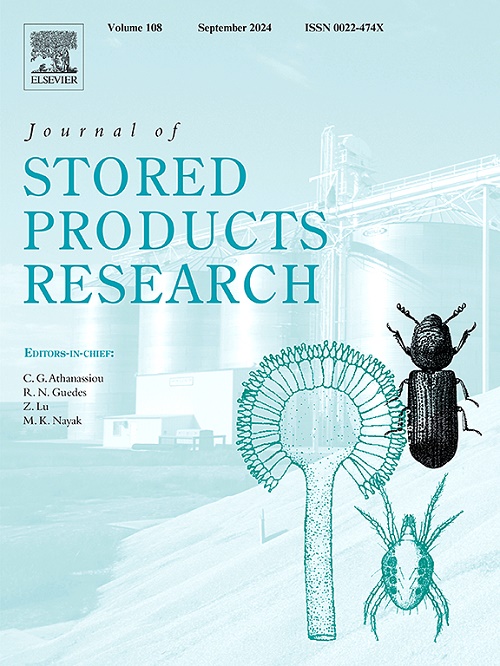对噬菌体基薄膜和涂层的新见解:活性食品包装系统的创新解决方案
IF 2.7
2区 农林科学
Q1 ENTOMOLOGY
引用次数: 0
摘要
食源性病原体污染是一个主要的全球卫生问题,需要创新的解决方案。与仅作为屏障的传统包装不同,活性包装通过防止包装环境中食源性病原体的生长而起作用。在这种包装中使用的活性剂中,噬菌体已被提议作为食品部门的生物控制剂,以消除生物膜和腐败细菌。最近,与传统的抗菌剂不同,它们作为添加剂加入到可生物降解的包装中,以保持食品的感官和营养品质。此外,由于它们的宿主特异性,它们选择性地破坏食源性病原体而不影响有益生物。整合到薄膜和涂层中的噬菌体对常见的食源性病原体(如金黄色葡萄球菌、大肠杆菌和单核增生乳杆菌)的功效已经在不同的食物基质中进行了研究。近年来的研究表明,多价噬菌体或噬菌体鸡尾酒可以克服抗菌包装系统中宿主范围狭窄的限制。此外,将噬菌体与天然抗菌剂(如细菌素和精油)一起使用可以协同增强活性包装系统。作为对整个噬菌体颗粒利用的替代方案,其衍生物酶为食源性病原体的生物防治和开发有效的抗菌包装提供了一种创新方法。同样,人工智能和合成生物学等领域的进步也提高了这些病毒实体在对抗食源性致病菌方面的有效性。本文综述了用于包装的噬菌体膜和涂层的研究进展。此外,本研究综述了影响噬菌体包装效果的因素。本文章由计算机程序翻译,如有差异,请以英文原文为准。
Novel insights into phage-based films and coatings: Innovative solutions for active food packaging systems
Foodborne pathogen contamination is a major global health concern, demanding innovative solutions. Unlike traditional packaging, which serves only as a barrier, active packaging operates by preventing the growth of foodborne pathogens within the package environment. Among the active agents employed in such packaging, bacteriophages have been proposed as biological control agents in the food sector to eliminate biofilms and spoilage bacteria. Recently, their incorporation as additives into biodegradable packaging has been gaining prominence for preserving food's sensory and nutritional qualities, unlike conventional antibacterial agents. In addition, due to their host specificity, they selectively destroy foodborne pathogens and do not affect beneficial organisms. The efficacy of bacteriophages integrated into films and coatings against prevalent foodborne pathogens such as S. aureus, E. coli, and L. monocytogenes has been investigated across diverse food matrices. Recent research shows that polyvalent bacteriophages or bacteriophage cocktails can overcome the limitation of narrow host range in antimicrobial packaging systems. Additionally, using bacteriophages alongside natural antimicrobials such as bacteriocins and essential oils can synergistically enhance active packaging systems. As an alternative to the utilization of whole bacteriophage particles, their derivative enzymes present an innovative approach for the biocontrol of foodborne pathogens and the development of effective antimicrobial packaging. Likewise, advances in fields such as artificial intelligence and synthetic biology have improved the effectiveness of these viral entities in combating foodborne pathogenic bacteria. The present review highlights advancements in bacteriophage-incorporated films and coatings for packaging applications. Furthermore, this study reviewed the factors that influence the effectiveness of bacteriophage-based packaging.
求助全文
通过发布文献求助,成功后即可免费获取论文全文。
去求助
来源期刊
CiteScore
5.70
自引率
18.50%
发文量
112
审稿时长
45 days
期刊介绍:
The Journal of Stored Products Research provides an international medium for the publication of both reviews and original results from laboratory and field studies on the preservation and safety of stored products, notably food stocks, covering storage-related problems from the producer through the supply chain to the consumer. Stored products are characterised by having relatively low moisture content and include raw and semi-processed foods, animal feedstuffs, and a range of other durable items, including materials such as clothing or museum artefacts.

 求助内容:
求助内容: 应助结果提醒方式:
应助结果提醒方式:


